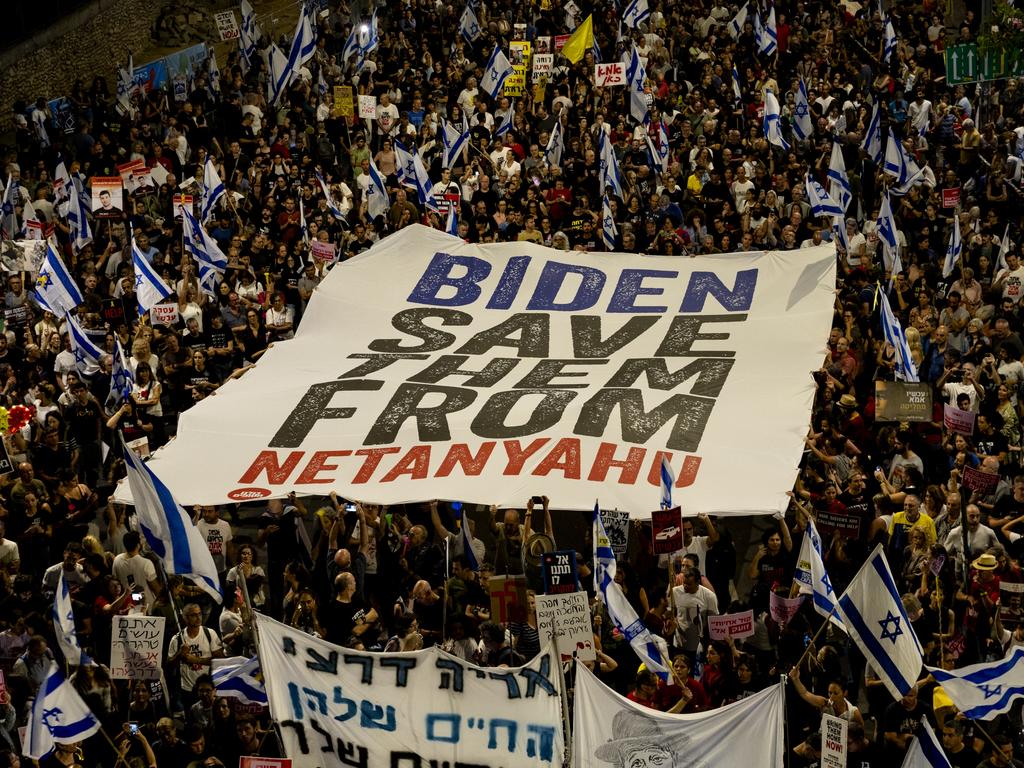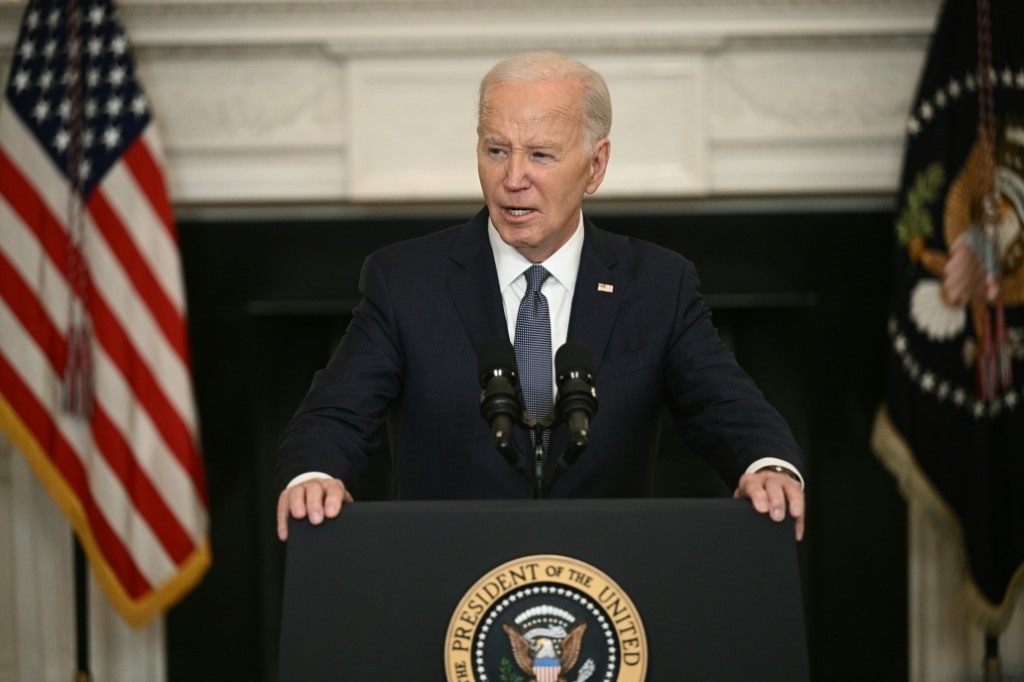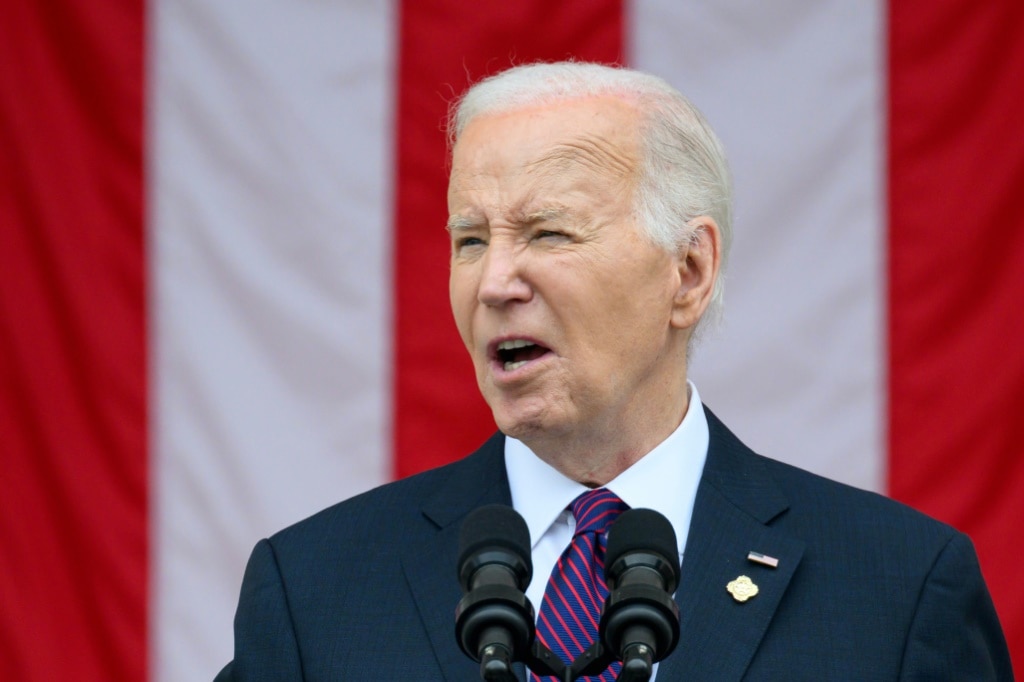Reality gets in the way of Biden peace plan
The US president’s proposals come after months of negotiations but uncertainty remains over whether a ceasefire deal can work.
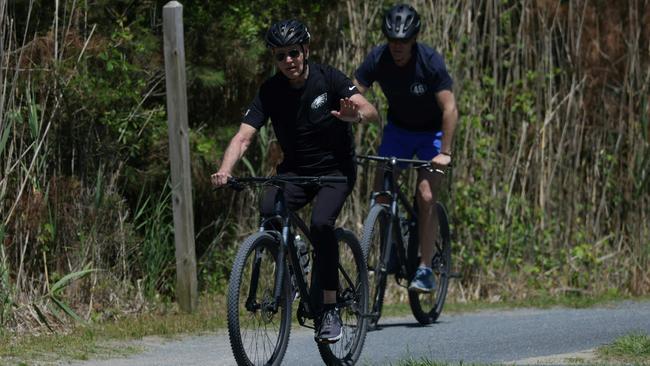
Joe Biden stood at the White House plinth and declared “it’s time for this war to end”, before unveiling a road map to peace in Gaza that he presented as an Israeli plan.
Less than 24 hours later the tentative optimism felt around the world at the US President’s announcement had collided with complex reality.
Despite demonstrations across Israel led by hostage families urging their government to accept the deal, the chief foreign policy adviser to Israeli Prime Minister Binyamin Netanyahu said Biden had made “a political speech for whatever reasons”.
Ophir Falk emphasised that Israel was not rejecting the deal, which he called “a deal we agreed to – it’s not a good deal but we dearly want the hostages released, all of them”.
But he said that Israel’s conditions “have not changed – the release of the hostages and the destruction of Hamas as a genocidal terrorist organisation”.
Biden’s announcement came days after the revelation that Israel used American bombs in an airstrike on Rafah last Sunday that set a fire raging through a refugee camp, killing at least 45 people.
Biden mentioned the “terrible images” from the fire and said that “the Palestinian people have endured sheer hell in this war”. He also spoke of the pain of the Israelis whose relatives were “slaughtered by Hamas terrorists on October 7” and the “anguish” of families waiting for hostages to be released.
His proposal was received as “positive” by Hamas and welcomed in Israel by families of some of the remaining hostages as well as some world leaders.
Yet others accused the President of grandstanding and there was immediate confusion over whose deal this really was.
Alon Liel, former director of Israel’s foreign ministry, said there was a “mixed message again coming from Washington”. He described the plan as “music to the ears of the Israelis who want to end the war”, but noted that the road map, which emerged after meetings in Paris last week between CIA director Bill Burns and Israeli counterpart David Barnea, the head of Mossad, as well as Qatari Prime Minister Mohammed Bin Abdul Rahman al-Thani, “contradicts many things that Netanyahu said recently; it looks more like a US offer that is presented as an Israeli one.
The plan is divided into three stages. The first of “roughly six weeks” aims to establish a “full and complete ceasefire”, including withdrawal of Israeli forces from “densely populated” areas of Gaza and the return of elderly and female hostages in exchange for the release of hundreds of Palestinian prisoners. Details are still to be ironed out over exact numbers.
The second phase would involve the release of all remaining hostages, including male soldiers, and a “permanent cessation of hostilities” combined with a full withdrawal of Israeli troops from Gaza. Netanyahu has previously rejected a complete withdrawal.
The third and final stage would see the return of the remains of dead hostages, the clearing of rubble and the reconstruction of Gaza, backed by the US, Europe and international institutions.
A former Catholic priest familiar with the parties involved and experienced in Israeli-Palestinian negotiations said there was “nothing new” in the plan and described Biden’s announcement as “soundbite diplomacy”.
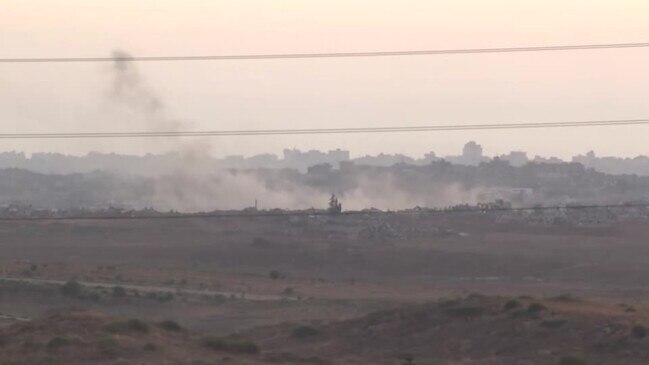
Oliver McTernan, director of the conflict resolution organisation Forward Thinking, has worked more than 20 years on negotiations.
“There’s nothing different that hasn’t been there before in different rehashes,” McTernan said. “All the obstacles that have been there from day one on both sides are still there.” But the context had shifted because of “the Hamas response”.
“This can be a defining moment.”
Seizing it would require America to lean more heavily on Israel.
“Only Biden can bring this to an end – let’s see if he walks the talk.”
Hamas has repeatedly insisted to mediators that it would not even return to the negotiating table until Israel halted its military campaign completely.
Biden clearly tried to sweeten the deal for Netanyahu by inviting him to Washington to address congress and urged him to resist pressure from those on the far right.
“I know there are those in Israel who will not agree with this plan and will call for the war to continue indefinitely,” he said. “Some are even in the government coalition.”
The problem is that for Netanyahu it would be political suicide to end the war; were he to take the deal before Hamas is destroyed, his government could lose the support of the far right and fall. He would face accountability for the negligence that let October 7 happen and he could face jail for corruption charges.
Benny Gantz, a Netanyahu rival and war cabinet member whose centrist party is pushing for an early election, said the goal of returning the hostages “is of superior moral importance … a top priority on the timeline of war objectives”.
One complication is that no one, including Hamas, knows exactly how many hostages remain and where, because some were taken by different groups. Two recently released were apparently being held by a crime syndicate.
Biden, too, is facing domestic political pressure in the run-up to November’s election. Daily images of destruction from Gaza have left many voters horrified at what they see as complicity in human rights abuses with the US providing weapons used in killing civilians.

